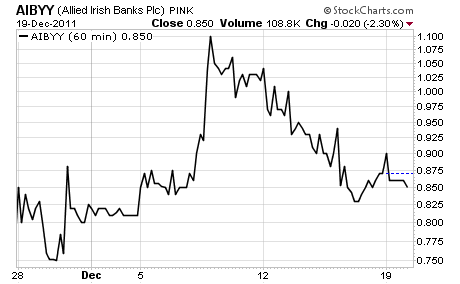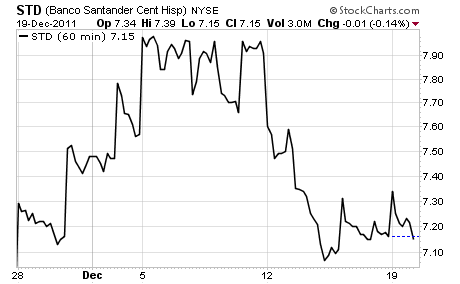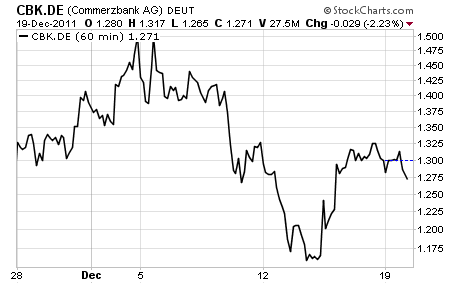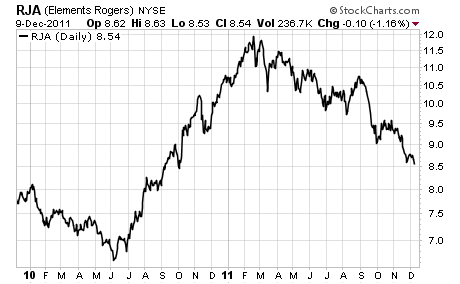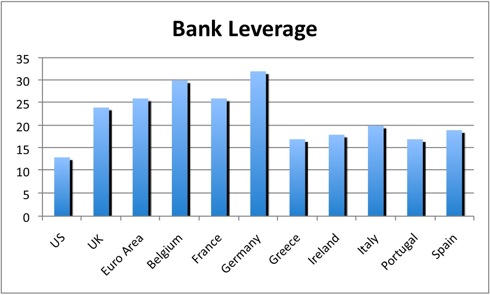I continue to see commentators claiming QE 3 is just around the corner. I don’t see how this is possible because all of the Fed’s excuses for more QE are no longer valid.
First off, interest rates are already at or near record lows. So the Fed cannot argue that it needs to lower rates. Moreover, it’s not like lowering rates via QE 1, QE lite, QE 2, and Operation Twist 2 did much to help the US housing market. So QE 3 can’t be presented as a solution to housing.
Secondly, the economic data coming out of the US has been massaged to the point of not looking so bad. So the Fed cannot use the “economy is collapsing” argument this time either. And it’s not as though the public isn’t totally aware that QE 2 did next to nothing for the economy.
Indeed, the Fed spent $600 billion on QE 2 and had at most three months’ of improved economic data as a result (QE 2 was announced in November and the US economy rolled over in February 2011). The public is well aware of this as well as the fact that QE 2 saw inflation exploding higher.
Despite end-of-year decline, 2011 food prices highest on record – UN
Global food prices declined in December, but the overall annual average was the highest ever on record, the United Nations Food and Agriculture Organization (FAO) reported today.
Last month, FAO’s Food Price Index level was 211 points – 27 points below its peak in February. The decline was driven by sharp falls in the international prices of cereals, sugar and oils due to a productive harvest coupled with a slowing demand and a stronger United States dollar.
However, despite the steady decline in prices during the second half of the year, the Index overall averaged 228 points in 2011 – the highest average since FAO started measuring international food prices in 1990. The second highest average occurred in 2008 at 200 points.
http://www.un.org/apps/news/story.asp?NewsID=40925&Cr=food&Cr1=prices
Food prices hit all time highs in 2011, resulting in numerous revolutions and riots throughout the world. The increased cost of living also drew a lot of negative attention to the Fed from the US populace. So it’s not like the Fed can use the “QE will stimulate the economy” argument anymore.
The final argument for QE is that Obama needs the economy to recover to win the 2012 election. This argument completely overlooks the fact that Bernanke and the Fed are now politically toxic.
If the Fed were not in trouble politically, why would it:
1) Stage town hall meetings
2) Open up to Q&A sessions
3) Have “humanizing’ articles written about Bernanke in major media publications.
4) Moving towards more transparency on its forecasts and projections
These are all defensive moves. And the Fed wouldn’t be making them if it wasn’t under pressure. Which makes it all the more unlikely that QE 3 would help Obama. The public is already outraged at the Fed moves. And QE 3 would send inflation through the roof. How exactly would this benefit Obama’s Presidential campaign?
In the end, the bar for QE 3 is much, much higher than most people think. The days in which the Fed could do whatever it wanted are over. And there simply isn’t a decent argument for QE 3 at this time.
In the end, it’s not as though QE 3 would do much for the market anyway. Look at the recent coordinated Central Bank intervention in November… the benefits lasted less than a month.
And somehow QE 3 is going to send stocks through the roof? Give me a break. Look at earnings. They’ve been a disaster, and investors are pulling their funds from the market en masse.
On that note, I truly believe we’re on the verge of the next round of the Great Crisis. The credit and bond markets are already starting to predict another 2008 event. Only this time things will be even worse because the Fed has already used up its tools into combating the First Round of the Crisis.
Many people see their portfolios go up in smoke with this. Don’t be one of them. The time to prepare your portfolio for the collapse is NOW before it starts.
I can show you how.
Indeed, while 99.9% of investors lost their shirts in 2008, my subscribers actually MADE MONEY.
We did the same thing during the first round of the Euro Crisis in 2010.
And so far we’ve locked in 34 STRAIGHT WINNERS in the last five months… including gains of 12%, 15% even 18%.
In fact we haven’t closed a SINGLE LOSING TRADE in the second half of 2011.
We just opened several new positions last week, all of them designed to profit beautifully from the coming collapse of the EU.
To find out what they are… and take action to insure that the coming disaster will produce profits NOT pain for you and your portfolio…
Graham Summers
Chief Market Strategist
Phoenix Capital Research









